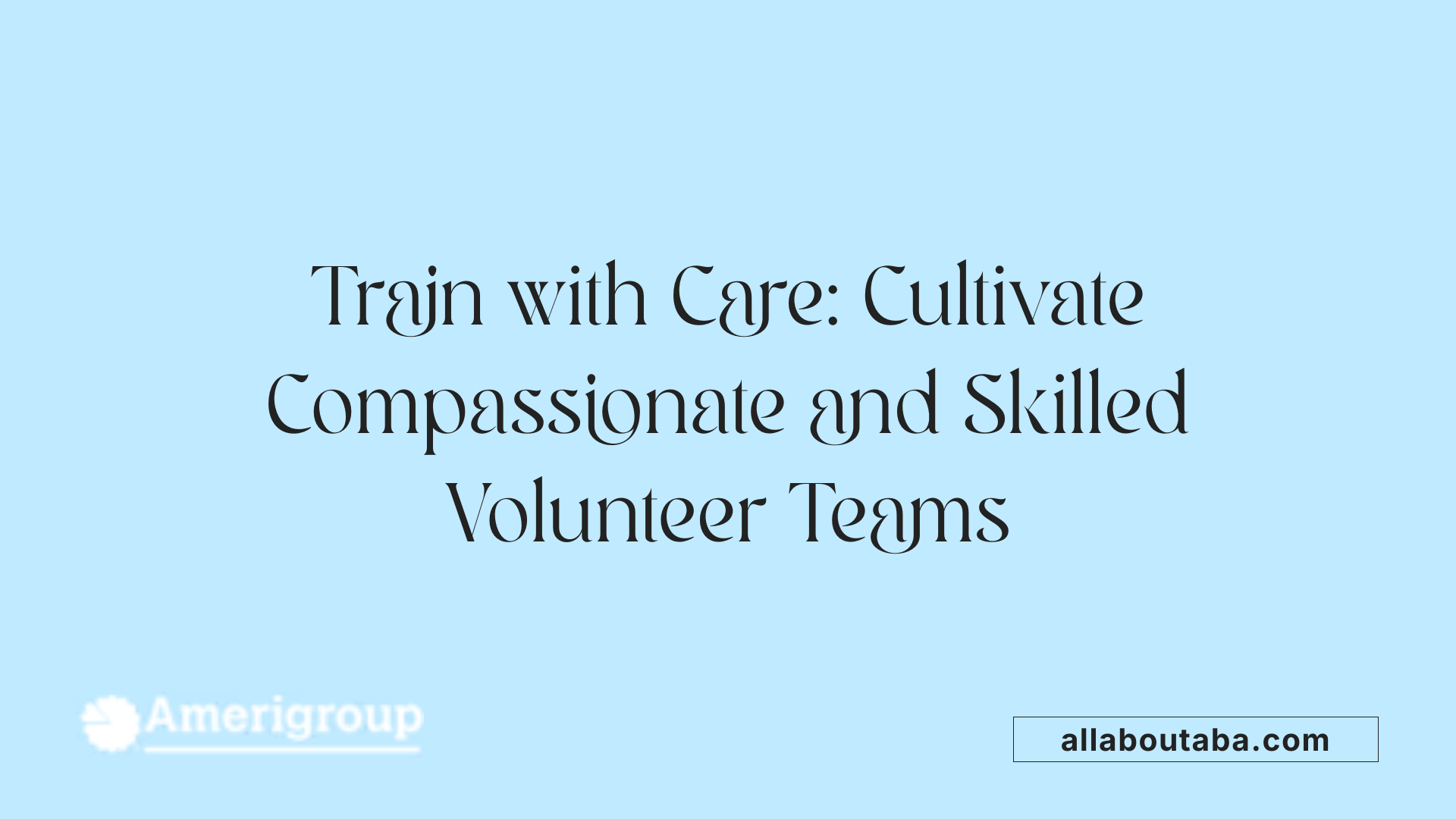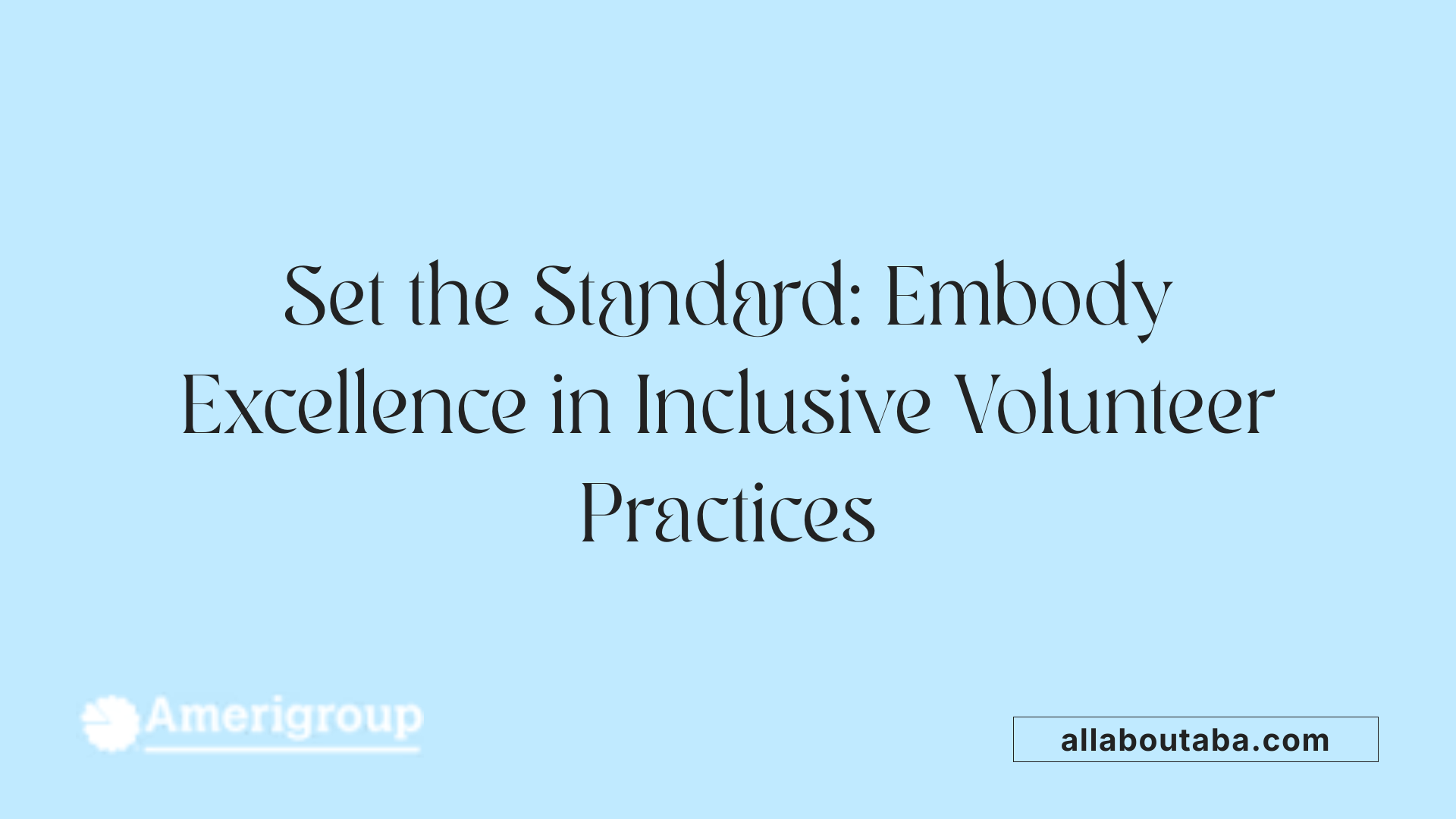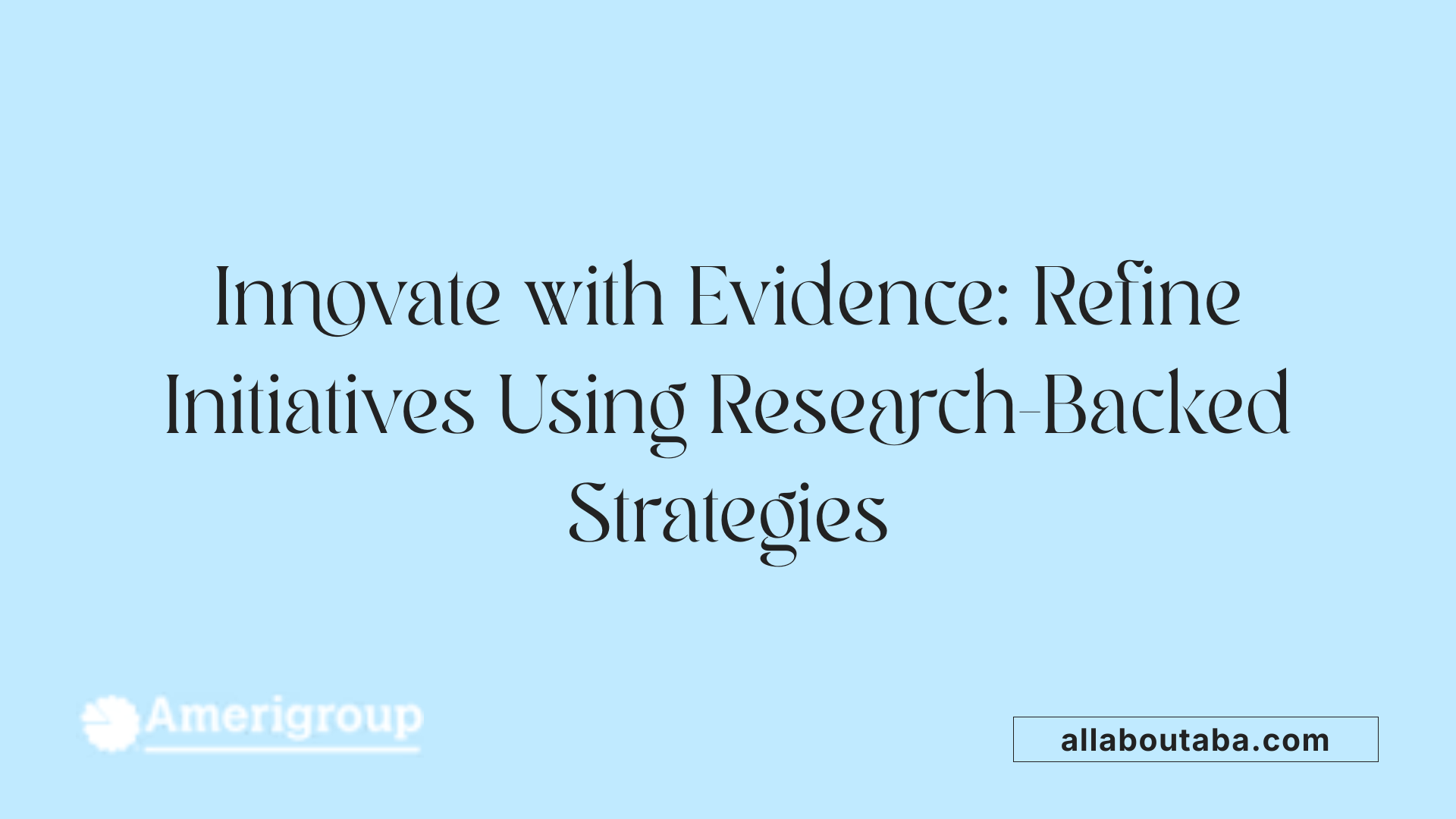Fostering Inclusion and Support in Volunteer Initiatives
In recent years, community service programs have recognized the vital importance of creating autism-friendly volunteer environments. Such initiatives not only strengthen social bonds but also empower autistic individuals to develop essential skills like social interaction, independence, and career exploration. This article explores best practices, resources, and strategies to develop and implement inclusive volunteer programs that truly support and involve individuals on the autism spectrum.
Guidelines and Resources for Creating Supportive Autism-Aware Environments

What guidelines and resources are available for creating supportive, autism-aware volunteer environments?
Building an environment that is welcoming and accommodating for autistic individuals involves multiple practical steps. Providing thorough autism awareness training for volunteers is essential. Such training should include understanding sensory sensitivities, communication preferences, and how to support individuals with diverse needs.
Resources like 'A Guide to Safety,' 'Curriculum in a Box,' and 'Siblings Guidebooks' serve as valuable materials for community organizations. These guides promote understanding, acceptance, and effective support strategies tailored to autistic populations.
Designing sensory-friendly spaces is a crucial component. Incorporate accommodations such as quiet areas, sensory breaks, and noise-canceling aids to help reduce overstimulation. These spaces can serve as calm zones where individuals can relax or regain composure.
Planning activities based on individual interests and routines fosters engagement and comfort. Using visual supports, social stories, and structured routines with clear visual cues creates a predictable environment that enhances safety and participation.
Furthermore, ongoing education through workshops and direct interactions with autistic voices can deepen understanding. Emphasizing respectful communication and flexibility supports inclusivity. The result is a volunteer environment that not only respects individual differences but actively promotes positive and meaningful interactions.
What resources are available for understanding and applying inclusive practices in community service involving autistic individuals?
Numerous resources support organizations and communities in adopting inclusive practices. National and local organizations such as Autism Speaks and The Autism Society offer comprehensive guides, training modules, and educational programs.
These resources include tailored strategies for community involvement, employment support, and safety planning that respect the unique needs of autistic individuals. They also promote autism-friendly events and advocate for policy changes that foster accessibility and inclusion.
Research centers, including University Centers for Excellence in Developmental Disabilities Education and Autism Research Centers, provide evidence-based guidelines and best practices. These resources help communities develop programs that are effective and respectful.
In addition, many organizations foster partnerships with local specialists, support networks, and advocacy groups, facilitating access to culturally competent and community-specific resources. Practical experience through volunteer and internship opportunities further enhances understanding and skills in supporting autistic individuals.
Implementing these guidelines and utilizing available resources creates community settings where autistic individuals feel valued, supported, and empowered to participate fully.
| Aspect | Description | Additional Notes |
|---|---|---|
| Training | Autism awareness programs for volunteers | Focus on sensory needs, communication, support techniques |
| Resources | Guides like 'A Guide to Safety', 'Siblings Guidebooks' | Promote understanding, acceptance |
| Space Design | Sensory-friendly areas with quiet zones, sensory tools | Reduce overstimulation |
| Activity Planning | Interest-based and routine-based activities | Use visual supports and social stories |
| Educational Opportunities | Workshops, direct engagement with autistic voices | Foster ongoing understanding |
Expanding efforts in these areas ensures community programs are inclusive, respectful, and enriching for everyone involved.
Building Competent and Compassionate Volunteer Teams

What training and education methods are effective for preparing volunteers to support autistic participants?
Effective volunteer training programs for supporting individuals with autism rely on a combination of educational tools and practical experiences. These programs typically span multiple days and include a variety of components such as instructional videos, detailed explanations of autism-related terminology, and role-playing exercises. Such comprehensive training ensures volunteers understand autism spectrum disorder (ASD) nuances and develop skills to respond appropriately.
Practical exercises, including improvisation games and scenario-based role-playing, help reinforce learning and build confidence. These activities promote empathy by allowing volunteers to experience perspectives similar to those of autistic individuals. Emphasizing core values like love, acceptance, and understanding not only improves volunteer attitudes but also enhances interactions.
Ongoing education sessions are vital for keeping volunteers current with the latest research, tools, and best practices. Regular feedback from trainers and peers supports continuous skill improvement. Customizing activities to fit individual preferences and household routines ensures consistency and encourages positive reinforcement. This structure fosters trust and adaptability, benefiting both volunteers and participants.
Creating inclusive environments involves training volunteers to set up sensory-friendly spaces, such as quiet areas or rooms with minimal sensory stimuli. Clear communication, visual supports, and the use of concrete language are emphasized to support diverse neuroprofiles. Such environments reduce overwhelm, enabling greater participation and enjoyment.
In sum, effective autism-specific volunteer training programs blend educational content, experiential learning, continuous updates, and environmental adaptations. This holistic approach prepares volunteers to create supportive, respectful, and engaging experiences for autistic individuals, boosting community involvement and fostering positive social connections.
Developing and Implementing Autism-Friendly Volunteer Programs
What are the best practices for developing and implementing autism-friendly volunteer programs?
Creating volunteer programs that are welcoming and accessible for individuals on the autism spectrum requires thoughtful planning and execution. Programs should start with comprehensive training that covers autism awareness and intervention strategies. This training must emphasize the importance of acceptance, patience, and understanding each individual's unique needs and preferences.
Promoting inclusive communication techniques—such as using visual aids, clear language, and concrete instructions—can significantly improve understanding and participation. Additionally, designing sensory-friendly, accessible spaces is vital. This might involve quiet areas, adjustable lighting, and noise management to help reduce sensory overload and create a comfortable environment.
Collaboration with autistic individuals, advocacy organizations, and community professionals ensures that activities are tailored to meet diverse needs. For example, involving autistic community members in planning can foster relevance and engagement.
Implementing structured activities like team-building exercises, community mapping, and mentorship fosters social skill development. These activities provide opportunities for interaction, leadership, and forging new social networks. Mentoring relationships, especially, help build trust and rapport, encouraging confidence and a sense of belonging.
Ongoing evaluation and feedback remain crucial. Regular reflection sessions allow program coordinators and participants to discuss what works and what needs adjusting. Feedback helps adapt activities to be more inclusive and impactful over time.
Finally, fostering a culture of flexibility within the program—such as offering varied roles, options for communication, and accommodations—ensures sustained participation and success for all volunteers. Consistent commitment to these practices advances social responsibility and supports neurodiverse community inclusion.
Standards and Exemplaries in Inclusive Volunteer Management

What are the standards and exemplars of inclusive volunteer program management?
Effective inclusive volunteer management relies on several core standards that ensure equitable participation and accessibility for all individuals, including those on the autism spectrum. Central to these standards is strict adherence to accessibility guidelines which aim to eliminate barriers—be they physical, sensory, or communication-based—that could hinder participation.
Programs should implement ongoing cultural competence training for staff and volunteers. This training helps build understanding of diverse needs, promotes respectful interactions, and fosters an inclusive environment across community initiatives.
Community collaboration plays a vital role. Partnering with marginalized groups, such as autism advocacy organizations, ensures programs are aligned with the community’s real needs. This collaboration also allows for the integration of lived experiences that can guide program design, making initiatives more effective and respectful.
Regular assessment and feedback mechanisms support continuous improvement. Collecting input from participants, volunteers, and community stakeholders helps identify barriers and develop tailored solutions.
Designing accessible events and marketing materials is another key element. This includes sensory-friendly activities, clear signage, straightforward language, and visual aids. Inclusive marketing involves using diverse imagery and language that resonates across different communities.
Recognition systems like the Autism Friendly Communities (AFC) tiers—Bronze, Silver, and Gold—illustrate exemplary commitment. These certification levels acknowledge organizations that meet defined standards through their engagement, policies, and environment adjustments.
Achieving recognition as an Exemplary Volunteer Involving Organisation (EVIO) involves ongoing reflection, policy reinforcement, and dedicated resource allocation. It requires a proactive approach to addressing potential barriers and fostering genuine relationships with diverse community members.
Exemplary programs also incorporate community input and focus on authentic engagement rather than paternalistic practices. This ensures that initiatives are sustainable, respectful, and truly inclusive.
By establishing clear policies, continuously evaluating progress, and involving community voices, organizations can foster a culture of diversity, equity, and inclusion that benefits all volunteers and recipients alike.
Summary of Best Practices:
| Practice | Description | Benefits |
|---|---|---|
| Accessibility adherence | Design environments and activities accessible to all | Increased participation, reduced barriers |
| Cultural competence training | Educate staff and volunteers on diverse needs | Better interactions, respectful environments |
| Community collaboration | Partner with marginalized groups for insight | Relevant, effective programs |
| Feedback and assessment | Regularly gather participant input | Continuous improvement |
| Inclusive event design | Use sensory-friendly and straightforward materials | Broader reach, comfort |
| Certification and recognition | Implement AFC tiers and EVIO standards | Validate inclusion efforts |
Through these standards and exemplary practices, organizations not only comply with best practices but also foster inclusive communities where every individual, regardless of ability, can contribute meaningfully.
Enhancing Existing Initiatives with Evidence-Based Methods

How can existing autism-friendly volunteer initiatives be improved through evidence-based methods?
Improving autism-friendly volunteer programs involves applying well-supported, research-backed strategies. Incorporating practices like Applied Behavior Analysis (ABA), social skills training, and customized communication techniques can make these initiatives more effective. These methods have been proven through peer-reviewed research to support positive behavioral and social outcomes for autistic individuals.
Regular feedback from participants and their caregivers is essential. Surveys and informal check-ins help identify what works and what needs adjustment. These insights guide program modifications, ensuring activities meet the varied needs of autistic volunteers and beneficiaries. This continuous input fosters a responsive, person-centered approach.
Environmental adaptations play a crucial role in creating inclusive spaces. Implementing sensory-friendly areas—such as quiet zones, soft lighting, and noise-reducing materials—helps reduce sensory overload. Visual supports like picture schedules or visual cues assist in comprehension and navigation, promoting independence and comfort.
Training staff and volunteers with current, research-based methods further enhances program quality. Programs like Autism 101 or neurodiversity training, based on the latest scientific understanding, equip staff with effective techniques for supporting autistic individuals. These trainings focus on understanding behavioral patterns, communication preferences, and sensory sensitivities.
Collaboration with autism experts, healthcare providers, and advocacy groups ensures ongoing alignment with evolving research. Such partnerships can facilitate access to new evidence-based practices, provide expert consultations, and support staff training. This collective effort promotes continuous program development and improves inclusivity.
Strategies for Improving Autism Volunteer Initiatives
| Approach | Description | Benefits |
|---|---|---|
| Use of Peer-Reviewed EBP | Integrate ABA, social skills training, and tailored communication methods | Better behavioral outcomes, improved social interactions |
| Regular Feedback Surveys | Collect input from participants and caregivers regularly | Enables responsive adjustments, personalizes support |
| Environmental Modifications | Establish sensory-friendly spaces and visual supports | Reduces anxiety, enhances engagement, supports independence |
| Research-Based Staff Training | Implement current, evidence-backed training programs | Improves support efficacy, boosts volunteer confidence |
| Expert Collaboration | Partner with healthcare providers, research institutions, and advocacy groups | Ensures stays updated with latest research, promotes best practices |
By systematically applying these evidence-based methods, autism volunteer initiatives can become more effective, inclusive, and supportive. This ongoing refinement helps maximize positive impacts for autistic individuals and enriches community involvement.
Towards a More Inclusive Future for Volunteering
Implementing best practices in autism-friendly volunteer programs demands a comprehensive approach rooted in awareness, tailored training, structured activities, and community collaboration. By leveraging resources, adhering to standards, and constantly refining initiatives through evidence-based methods, organizations can create welcoming environments that truly support autistic individuals. Promoting inclusion not only benefits individuals with ASD but also enriches communities through diversity, understanding, and shared purpose. Moving forward, continuous evaluation, stakeholder engagement, and embracing innovative solutions will be key to fostering sustainable, impactful, and inclusive volunteer programs for all.
References
- Building Social Skills for Youth with Autism Spectrum Disorder
- Interacting with Autistic People - Milestones Autism Resources
- Autism Serves Volunteer Program
- Volunteering Opportunities for People With ASD
- Tips on Training Volunteers - Autism Treatment Center of America ...
- Autism Friendly Communities - Autism Society of Central Virginia
- Autism Awareness Events: Getting Involved in Your Local Community







